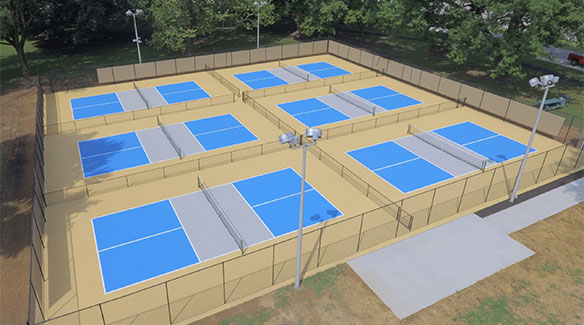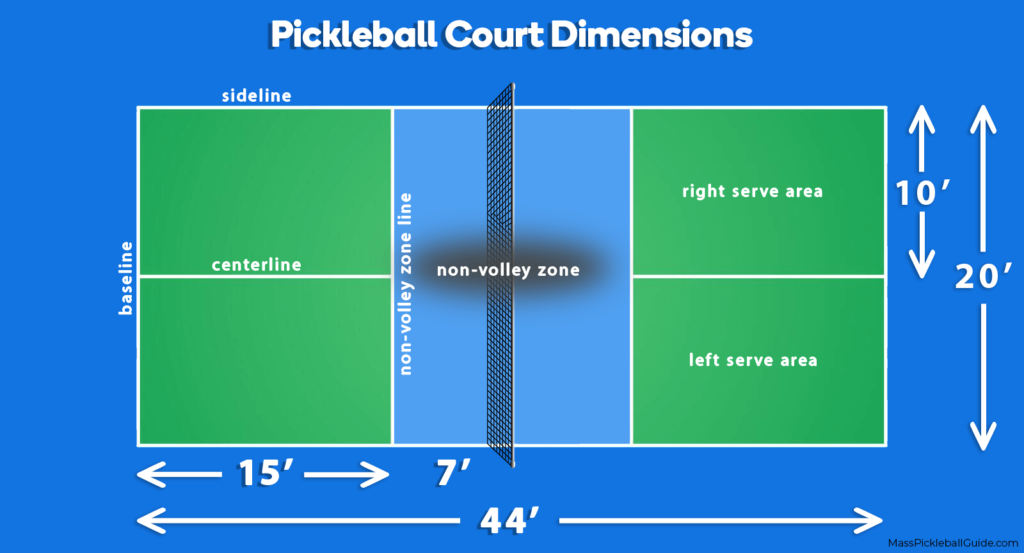Usual Mistakes to Avoid in Your Pickleball Court Construction Process
Usual Mistakes to Avoid in Your Pickleball Court Construction Process
Blog Article
Navigating Rules for Pickleball Court Building And Construction in Your Area
Constructing a pickleball court in your location needs a nuanced understanding of numerous neighborhood policies, including zoning laws, building licenses, and safety and security criteria. Engaging with local authorities and the area is important for guaranteeing conformity and fostering support.
Comprehending Local Zoning Regulations
When taking into consideration the building and construction of a pickleball court, understanding regional zoning regulations is critical to making certain compliance and preventing prospective lawful concerns. Zoning laws determine how land can be utilized and usually include specs related to leisure facilities. These legislations can vary substantially by town, impacting elements such as court positioning, lights, size, and sound degrees.
Prior to starting building and construction, it is vital to speak with the regional zoning board or preparation division to establish the particular laws that put on your residential or commercial property. Certain areas might limit entertainment activities, while others may require details permits or adherence to certain guidelines. It is also essential to take into consideration obstacles, which figure out exactly how far frameworks must be from home lines or various other structures.
In addition, private advancements, such as home owner organizations (HOAs), might impose their very own policies concerning the construction and usage of pickleball courts. Understanding these policies can stop pricey alterations or lawsuits down the line. Involving with neighborhood stakeholders and area participants can offer valuable insights and foster assistance for your project, making sure that it aligns with the area's expectations and demands.
Obtaining Necessary Structure Allows
Exactly how does one navigate the complexities of acquiring needed structure permits for a pickleball court? The procedure starts with understanding local regulations and requirements stated by metropolitan authorities. Typically, you will certainly need to submit a thorough site plan that outlines the suggested court measurements, materials, and design. This plan needs to adhere to zoning laws and any kind of details guidelines pertaining to recreational centers.

As soon as authorizations are acquired, it is critical to stick to any inspection schedules and demands throughout the construction stage. Preserving interaction with neighborhood authorities will facilitate a smoother approval process and assistance stay clear of possible setbacks. By completely preparing and comprehending the allowing landscape, you can efficiently browse the intricacies associated with constructing a pickleball court while remaining compliant with all regional guidelines.

Assessing Environmental Influence
A detailed assessment of ecological influence is necessary when planning the building of a pickleball court. This assessment aids identify prospective results on local ecological communities, water resources, and neighborhood aesthetics. Secret aspects to consider consist of website choice-- making certain that the court is not developed on environmentally delicate land, such as wetlands or habitats for threatened types
Dirt stability and drainage patterns need to be evaluated to prevent disintegration and water merging, which might adversely influence bordering greenery and wild animals. In addition, the option of products is important; opting for lasting and environment-friendly choices lessens ecological injury.
The application of reliable stormwater management methods is another important aspect, as it assists mitigate drainage and sedimentation. Involving with neighborhood environmental firms can give useful understandings right into regulations and best practices specific to your location.
Finally, neighborhood input can be valuable in understanding any kind of regional ecological worries and cultivating support for the project. By carrying out a thorough ecological influence assessment, stakeholders can ensure that pickleball court building and construction aligns with sustainable techniques and adds favorably to the area's ecological wellness.
Adhering To Safety Requirements
Ensuring conformity with safety and security standards is important for the successful building and construction and operation of a pickleball court. Abiding by well established safety and security guidelines decreases the risk of injuries and crashes, making certain a safe and secure environment for players.
Key security criteria consist of appropriate court measurements, surface materials, and lighting requirements. The court must satisfy the main measurements of 20 feet wide by 44 feet long for doubles play, with ideal buffer areas to avoid injuries from wayward spheres. Pickleball court construction. The surface area must be created from non-slip products to enhance traction and lower the probability of drops
In addition, lights needs to be sufficient for evening play, offering consistent lighting to avoid darkness that can hinder presence. Local structure codes may likewise determine particular demands for secure fencing and web height to ensure player safety and stop unapproved access to the court location.
Regular evaluations and upkeep are vital to copyright these standards with time. By prioritizing safety and security conformity, court owners not only protect players yet also cultivate a favorable online reputation within the community. This dedication to safety can motivate higher engagement and enjoyment of the sporting activity, inevitably contributing to its growth and sustainability.

Involving the Neighborhood in Planning
Community involvement in the planning phases of pickleball court construction can dramatically improve the project's general success. Engaging local homeowners and stakeholders promotes a sense of possession and encourages collaborative decision-making, which can result in wider support for the campaign.
To successfully entail the neighborhood, coordinators need to initiate public conferences or workshops, supplying a system for citizens to articulate their opinions and choices concerning place, design, and features. Surveys and responses forms can additionally be made use of to gather insights from a broader target market, making certain that diverse viewpoints are taken into consideration.
Furthermore, developing a community board of advisers can help with continuous Web Site conversations and address problems throughout the preparation process. This board can include representatives from different demographics, such as regional colleges, entertainment companies, and neighborhood watch, thus amplifying community depiction.
Reliable interaction is vital; updates regarding the task must be consistently shared by means of newsletters, social networks, or local notices. By focusing on area interaction, coordinators can grow enthusiasm, mitigate prospective resistance, and create a pickleball center that really resonates with local worths and requirements. This collaborative approach not just improves the project however likewise enhances area connections.
Conclusion
To conclude, browsing the intricacies of pickleball court construction demands a comprehensive understanding of neighborhood policies, including zoning laws, building authorizations, and safety standards. Conducting environmental evaluations is essential to mitigate environmental influence, while community involvement can boost support for such projects. By adhering to these guidelines and fostering cooperation, effective application of pickleball courts can be accomplished, promoting recreational chances and area well-being. Continued persistance in these locations more tips here will certainly make sure compliant and lasting development.
Constructing a pickleball court in your location needs a nuanced understanding of different regional laws, consisting of zoning laws, structure licenses, and safety and security requirements.When considering the building and construction of a pickleball court, recognizing local zoning laws is home vital to making certain compliance and preventing prospective legal concerns. By completely preparing and understanding the allowing landscape, you can successfully browse the complexities entailed in creating a pickleball court while staying compliant with all neighborhood guidelines.
In verdict, browsing the complexities of pickleball court building requires a thorough understanding of local guidelines, including zoning regulations, structure authorizations, and safety requirements. By adhering to these standards and cultivating collaboration, successful application of pickleball courts can be achieved, promoting leisure opportunities and community wellness.
Report this page